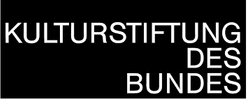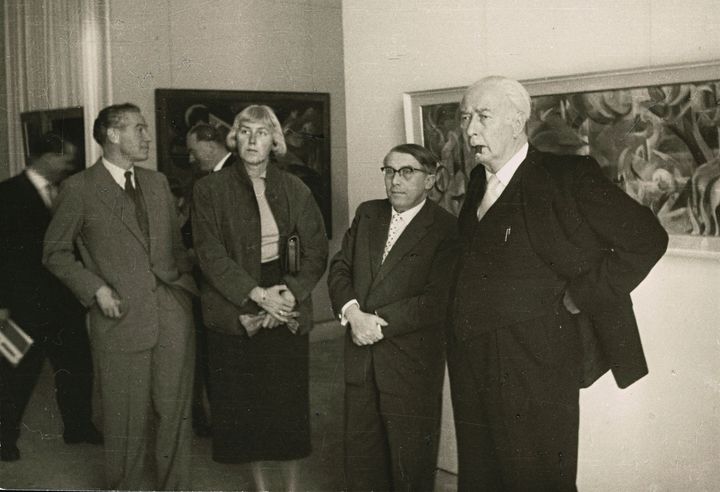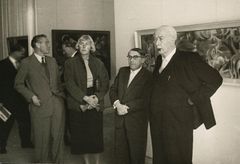

How the documenta invented the “Zero Hour” in art after 1945

The documenta owes its rise to the most successful German art exhibition not least to its political dimension: its disassociation from National Socialism and the bloc building of the Cold War. It was informed on the one hand by the supposed attempt to distance itself radically from Nazi cultural politics while at the same time refusing to deal openly with the Nazi past. On the other hand, its politically motivated orientation on the West included a decided aloofness toward and denigration of the socialist art of the “Eastern bloc”.
With “documenta. Politics and Art” the Deutsches Historisches Museum takes up the example of the famous exhibition in Kassel to shed light on the manifold interactions between politics and art in the society of the Federal Republic after 1945. Parallel to this, the exhibition “‘Divinely Gifted’. National Socialism’s favoured artists in the Federal Republic” (27.8.21 - 6.2.22) presents for the first time an examination of the post-war careers of so-called “divinely gifted” visual artists whom the Nazi authorities, from 1944 on, had deemed to be “indispensable” and were therefore exempt from front-line military service or other work for the war effort.
Raphael Gross, President of the Deutsches Historisches Museum: “With these exhibitions we want to bring to light a new perspective on the history of the Federal Republic in its international context. Both of them correct the notion of a radical aesthetic new beginning, which has often been attributed to the documenta and of which the early documenta framers made extensive use. There were, in fact, unbroken lines leading back to National Socialism. Works by murdered Jewish artists found no room in the early editions of the documenta. And in our exhibition on the previously almost unresearched ‘Divinely Gifted’, we are showing, conversely, the degree to which this group of visual artists who had been active in the Nazi cultural sector dominated the public space after 1945 and continue to dominate it to this day.”
Long Version: https://www.dhm.de/en/press/press-release/how-the-documenta-invented-the-zero-hour-in-art-after-1945/
Contacts
Dr. Stephan Adam
Abteilungsdirektor Kommunikation
Deutsches Historisches Museum
Tel: +49 30 20304-150
presse@dhm.de
Daniela Lange
Presse- und Öffentlichkeitsarbeit
Deutsches Historisches Museum
Tel: +49 30 20304-410
presse@dhm.de
Images

Links
About Deutsches Historisches Museum
Subscribe to releases from Deutsches Historisches Museum
Subscribe to all the latest releases from Deutsches Historisches Museum by registering your e-mail address below. You can unsubscribe at any time.
 Deutsches Historisches Museum
Deutsches Historisches Museum